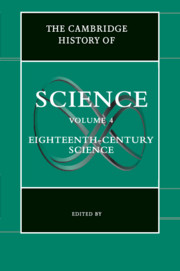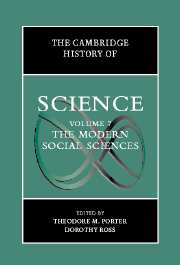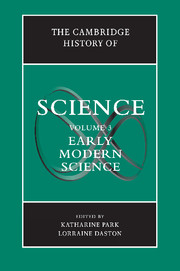Refine search
Actions for selected content:
13588 results in History of science and technology

The Cambridge History of Science
-
- Published online:
- 28 March 2008
- Print publication:
- 17 March 2003

The Cambridge History of Science
-
- Published online:
- 28 March 2008
- Print publication:
- 04 August 2003

The Cambridge History of Science
-
- Published online:
- 28 March 2008
- Print publication:
- 03 July 2006

The Cambridge History of Science
-
- Published online:
- 28 March 2008
- Print publication:
- 28 October 2002

Science, Technology and Medicine in Colonial India
-
- Published online:
- 28 March 2008
- Print publication:
- 20 April 2000
Further Reading
-
- Book:
- Grape vs. Grain
- Published online:
- 16 September 2009
- Print publication:
- 10 March 2008, pp 199-200
-
- Chapter
- Export citation
1 - Beer and Wine: Some Social Commentary
-
- Book:
- Grape vs. Grain
- Published online:
- 16 September 2009
- Print publication:
- 10 March 2008, pp 1-12
-
- Chapter
- Export citation
10 - The Healthfulness of Wine and Beer
-
- Book:
- Grape vs. Grain
- Published online:
- 16 September 2009
- Print publication:
- 10 March 2008, pp 163-180
-
- Chapter
- Export citation
9 - Types of Beer
-
- Book:
- Grape vs. Grain
- Published online:
- 16 September 2009
- Print publication:
- 10 March 2008, pp 141-162
-
- Chapter
- Export citation
Frontmatter
-
- Book:
- Grape vs. Grain
- Published online:
- 16 September 2009
- Print publication:
- 10 March 2008, pp i-vi
-
- Chapter
- Export citation
6 - The Quality of Wine
-
- Book:
- Grape vs. Grain
- Published online:
- 16 September 2009
- Print publication:
- 10 March 2008, pp 105-114
-
- Chapter
- Export citation
2 - A Brief History of Wine
-
- Book:
- Grape vs. Grain
- Published online:
- 16 September 2009
- Print publication:
- 10 March 2008, pp 13-22
-
- Chapter
- Export citation
8 - Types of Wine
-
- Book:
- Grape vs. Grain
- Published online:
- 16 September 2009
- Print publication:
- 10 March 2008, pp 129-140
-
- Chapter
- Export citation
7 - The Quality of Beer
-
- Book:
- Grape vs. Grain
- Published online:
- 16 September 2009
- Print publication:
- 10 March 2008, pp 115-128
-
- Chapter
- Export citation
Index
-
- Book:
- Grape vs. Grain
- Published online:
- 16 September 2009
- Print publication:
- 10 March 2008, pp 201-209
-
- Chapter
- Export citation
11 - Conclusions about Beer and Wine – and the Future
-
- Book:
- Grape vs. Grain
- Published online:
- 16 September 2009
- Print publication:
- 10 March 2008, pp 181-198
-
- Chapter
- Export citation
Grape vs. Grain
-
- Book:
- Grape vs. Grain
- Published online:
- 16 September 2009
- Print publication:
- 10 March 2008, pp xiii-xiv
-
- Chapter
- Export citation
4 - How Wine Is Made
-
- Book:
- Grape vs. Grain
- Published online:
- 16 September 2009
- Print publication:
- 10 March 2008, pp 61-78
-
- Chapter
- Export citation
Preface
-
- Book:
- Grape vs. Grain
- Published online:
- 16 September 2009
- Print publication:
- 10 March 2008, pp ix-xii
-
- Chapter
- Export citation
5 - How Beer Is Made
-
- Book:
- Grape vs. Grain
- Published online:
- 16 September 2009
- Print publication:
- 10 March 2008, pp 79-104
-
- Chapter
- Export citation
